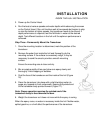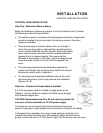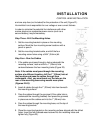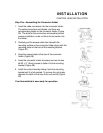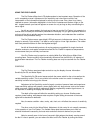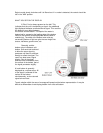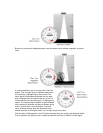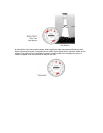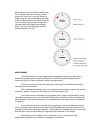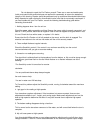
TESTING THE INSTALLATION
After installing your Pro Flasher and transducer, you are ready to test the installation. Testing
should be performed on the water, since that is the best way to confirm your transducer's
performance.
With your boat in the water, turn the Sensitivity / OnOff control clockwise. You should hear the
disk start to spin and see an area of light at the "0" line on the dial, and another at the number
corresponding to the depth of the water. Turning the Sensitivity control further clockwise
increases the sensitivity of the unit so smaller returns will be displayed.
Increase your boat speed to ensure that the transducer remains in contact with turbulence-free
water at higher boat speeds. All Humminbird depthsounders are designed to work at speeds of
70 MPH or more, however use caution when operating any boat at high speed. High-speed
testing does not apply to portable or trolling motor mounted transducers.
If the Pro Flasher fails to display a bottom return at high speed, first ensure that the depth of the
water is not in excess of the unit's capability. Also, ensure that the unit is fully seated on the
mount, and the cable connectors are correct. (The label on the cable connector matches the label
on the connector holder).
If no light appears when the Power/ Sensitivity control is turned on, the power cable or fuse
terminal may be the problem. If the unit obviously powers up but no bottom information is seen on
the display, the transducer is most likely the problem.
If the Pro Flasher operates well at idle or slow speeds, but loses the bottom at higher
speeds, the transducer is losing intimate contact with the water at higher speeds. If your
transducer is transom mounted, adjusting the running angle or depth of the transducer may solve
the problem. Several test runs and transducer adjustments may be necessary to optimize
transducer performance.
Warning: Due to the "manual" control operation of the Pro Flasher, interference with
sonar products using 200 KHz Frequency is likely.




